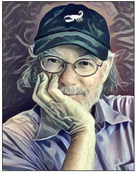By Thomas Mitchell
There is something a lot of Nevadans are full of. No, not that. Gumption.
It took gumption for the first settlers to come West and they passed that trait on to subsequent generations.
Take the example of two brothers from Winnemucca, who in the throes of the Great Depression in 1930 decided to load up and drive a 1929 Model A Ford Roadster from New York City to the banks of the Panama Canal.
This tale of unmitigated gumption is recounted in the recently published book: “1930: Manhattan to Managua, North America’s First Transnational Automobile Trip.” The book is basically the day-to-day dairy of one of the two brothers, Arthur Lyon. Lyon’s 308-page typewritten 1985 transcript “Central America through a Windshield” was edited for publication by his nephew Larry Lyon of Boulder City.
As Arthur Lyon recounts, it all began in March 1930 when his 21-year-old brother Joe, who had the reputation of being the fastest driver in Humboldt County, visited him in New York while on the way to visit M.I.T., where he planned to enroll in the fall.
This is how brother Arthur, then 25 years of age, somewhat laconically and surely with ample embellishment described the initiation of their audacious venture:
“‘Joe,’ I mused, ‘if you weren’t planning M.I.T. next fall, and if my big-hearted boss hadn’t given me a two-fifty raise last week and if (among a few other things) Bert here hadn’t the undeniable right to the companionship of her quite worthless husband (meaning myself, of course), I would venture to say that we might crank up the Ford and let it lead us out of this dismal life, which Mammon, money, and “thinking of my landlord’s last untimely and insistent visit” have forced into downright hard-hearted materialism. Let it carry us away for a while, at least, from this beastly weather and, as an afterthought, from the almost certain deleterious after-effects of the recent disastrous Wall Street crash.’ I could believe anything now. …
“‘And, Joe, we’ll go south, we’ll go further south than anybody ever went before in an automobile.’ A map of the North American continent flashed into my mind. ‘We’ll drive that car down through Mexico and Central America, and we won’t stop till we draw up head on against the Panama Canal — way down in the heart of the tropics — What say, Brother?’”
Subsequently, brother Joe allowed that he could use a year of experience more than college at that time and the trek was on — fueled by coffee and cigarettes and frequently too few funds and too little fuel.
They started on Sunday with $324 in cash in their jeans and the Ford’s rumble seat piled with suitcases, a bedroll and assorted supplies. From there the elder Lyon describes the landmarks as they head for the Mexican border, pausing long enough in Washington, D.C., to get Nevada Sen. Tasker Odie’s assistance in acquiring information about Central America and passports.
In addition to Arthur’s casual recounting, the book is filled with photographs taken with the brothers’ Kodak, showing often bleak landscapes and the ever-present Model A.
Realizing accommodations south of the border might be in short supply, while in Dallas the brothers purchased a tent, two cots and a grub box. Then Joe, in a perceptively savvy move, since fuel too might not be readily available, acquired a 55-gallon oil drum, mounted it in the fore part of the rumble seat and ran a copper tube to the carburetor. With 65 gallons of gasoline they could travel 1,000 miles.
They managed to talk the Mexican authorities into allowing them to “import” their rifle into the country so long as it would be “exported” in 60 days, but upon arriving at the Guatemalan border a Mexican customs official refused to allow it to be exported. The official did offer to buy it for 50 pesos. The brothers accepted so quickly he cut his offer to 45 pesos.
To export their car the customs agent demanded 20 pesos back.
“When the Mexican racketeers finished they turned us over to the Guatemalan gang next door,” Lyon writes, where more of their dwindling funds were extorted.
Without a weapon and speaking very little Spanish they then managed to travel without incident through miles and miles of bandito-filled territory.
Since the roads were oft times little more than rutted ox cart paths, they devised an ingenious way to bolt steel-flanged “tires” to the Ford’s wheels and use those to mount railroad tracks.
They did not quite make it to the Panama Canal. But in 54 days they traveled 4,562 miles to Managua, Nicaragua, where they managed to sell the car and use the proceeds to catch steamers home, Arthur to New York and Joe to McDermitt, Nevada.
Eventually, both brothers returned to Nevada to run car and bus “stage lines.”
This highly readable tale of gumption is available at several online bookstores, including Amazon and Barnes and Noble.
Thomas Mitchell is a longtime Nevada newspaper columnist. You may email him at thomasmnv@yahoo.com. He also blogs at http://4thst8.wordpress.com/



